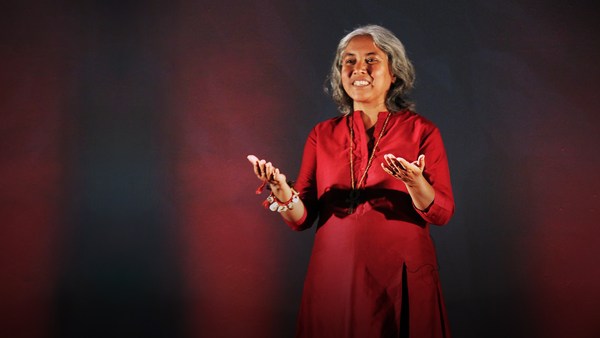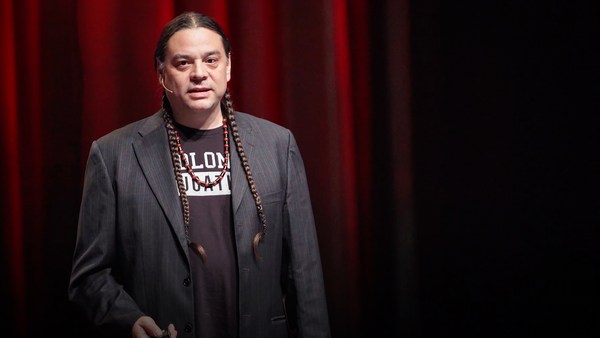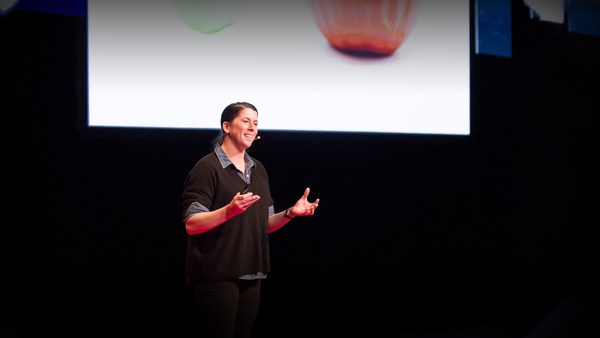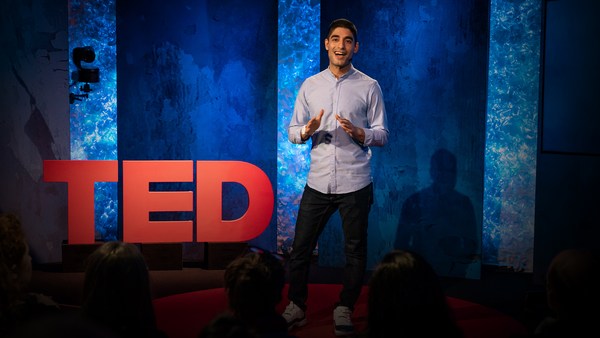This is Villa de Tamazulapan del Progreso, a beautiful little village in the Mixtec region of Oaxaca. My village, and the surrounding 154 villages of the region, have a population of about 400,000 people. For many centuries, our culture has retained its mysticism, rituals and many culinary traditions. And one of those culinary traditions is our special connection with chocolate, dating back 800 years. Our ancient, indigenous communities were among the first cultures in the world to use chocolate as a symbol for a social union.
This image was made between the 13th century and the early 16th century, and it is part of the “Zouche-Nuttall Codex.” The codex is composed of 47 painted deer skins, all of which represent the history of the Mixtec region. There are many social dynamics taking place in this picture, which specifically showcases the marriage between the Mixtec King and Queen. And notice the cup of hot chocolate between them that they are sharing to seal their marital bond. This tradition is still alive today, with chocolate front and center during the most important events of our communities, like births, weddings and even funerals.
But even though Oaxaca has a rich history of chocolate, and even though people enjoy chocolate all around the world, ancient Mixtec traditions around how to grow cocoa, process it and prepare it are fading away. Mexico is considered the cradle of chocolate, but four out of five chocolates made in Mexico are made with foreign cocoa. Meanwhile, the average age of a Mexican farmer is 63 years old. So we need to train a new generation of farmers in order to keep our land fertile and our crops alive.
I wanted to do something about this, and given that I truly believe in preserving and spreading the wisdom from indigenous communities to modern life, I turned my attention back to Oaxaca’s rich history of chocolate. And also, I wanted to try to support economically in my region, which has been considered one of the poorest regions of Mexico. So I teamed up with a tenacious team of local people to embrace our regional chocolate culture and make it a sustainable industry by its own right.
We call it Oaxacanita Chocolate, and it’s unlike a mass-marketed bar of chocolate. That’s because we rescued two native cocoa bean species. We started by growing 20 trees on a rooftop, and we’ve expanded our tree growth to five towns, cultivating 5,000 cocoa trees and counting, with the help of professionals like engineer Iván García, who was a gardener in the United States and has decided to come back to his community to be part of this taste movement. We also talked with traditional cooks of the region to learn about the regional recipes. There were many different ways that their ancestors used to prepare hot chocolate, starting from how the cocoa beans were roasted using clay comales to the many methods for stone grinding the paste. And now with this ancestral knowledge, we make a hot chocolate that uses spices like cinnamon, flavors like almonds and less sugar than most people are used to tasting, and that is a faithful representation for this millenary tradition. This recipe creates a rich, smooth, velvety flavor that warms not only your heart, but your soul.
And we, of course, wanted to engage the very communities whose wisdom and skills have been passed down over generations, but are in danger of disappearing. Our employees are mostly women, some of whom are having their first financial opportunities to support their families. People like Doña Rocío, who is our roast master, and who already knows the importance of tatemado, which means over roasting in traditional cuisine. Over roasting allows the cocoa beans to develop a stronger flavor while enabling us to more easily clean the husk off the bean.
And then there is Doña Maricruz, whose knowledge about cocoa beans has taught all of us how to screen cocoa beans for quality, classify the different varieties and mix certain bean species together to create subtle but distinctive flavors in the chocolate.
And we engage in local artisans to create our packaging with sustainable materials that they are already working with, like woven baskets, clay cups and molinillos.
Together, we cultivate the cocoa from the trees, produce the chocolate and package the final product. We started operations on a tiny scale in an empty room of my grandmother’s house. In 2015, we sold about 50 kilograms of chocolate. By 2020, we sold over 1,800 kilograms of chocolate, and our work has been recognized by the US government, the International Youth Foundation and Facebook, leading us to be the first Mexican chocolate company to be awarded internationally for social impact.
Working with a community for a community has taught me that we can simultaneously preserve traditions, economically boost the region, employ people locally and sell a delicious product with a history that people care about on a global scale. That potential lies in local communities around the world, so let’s invest in our indigenous history. That history is full of wisdom, and who knows, it may also be delicious.
Cheers.





